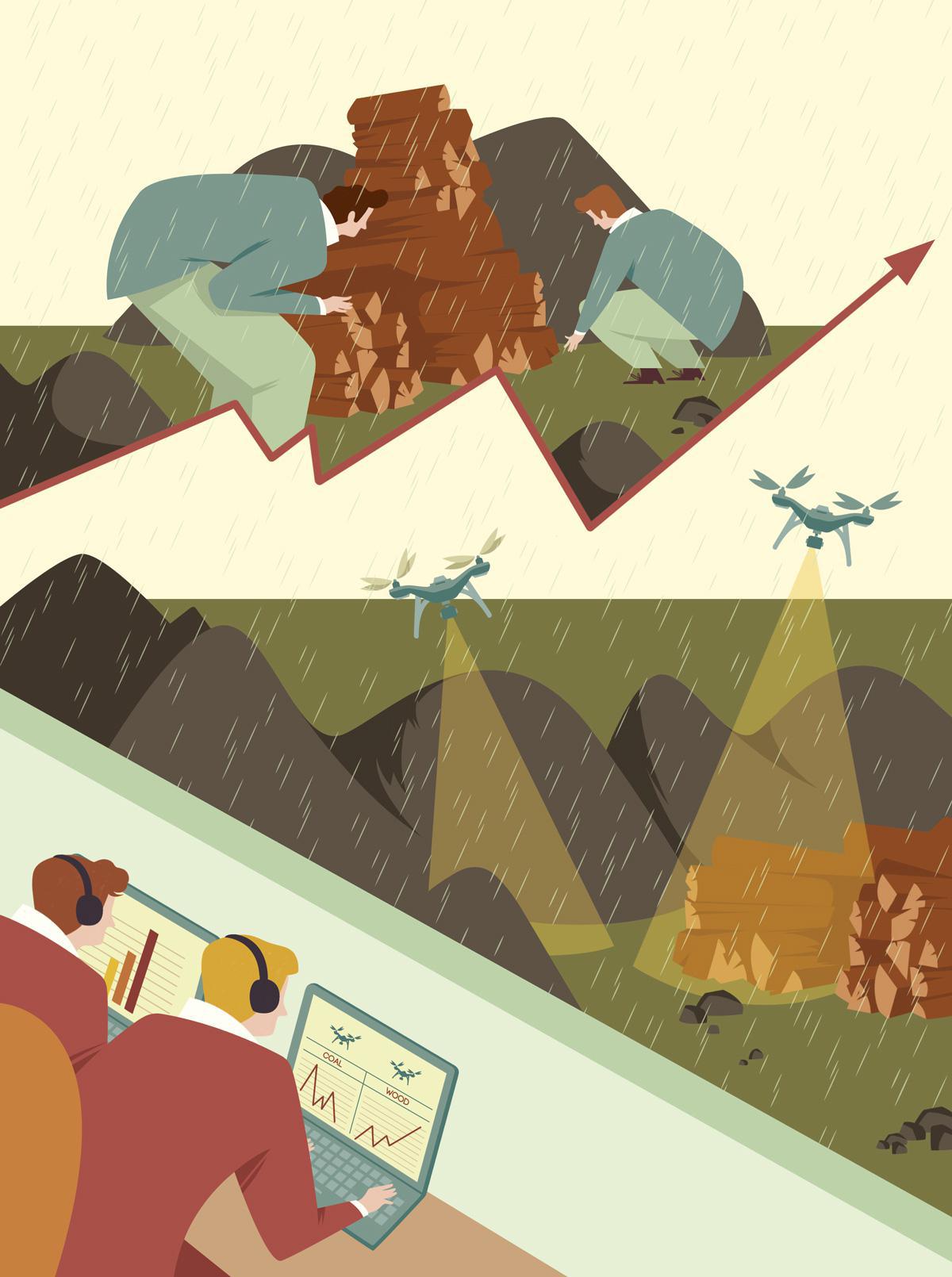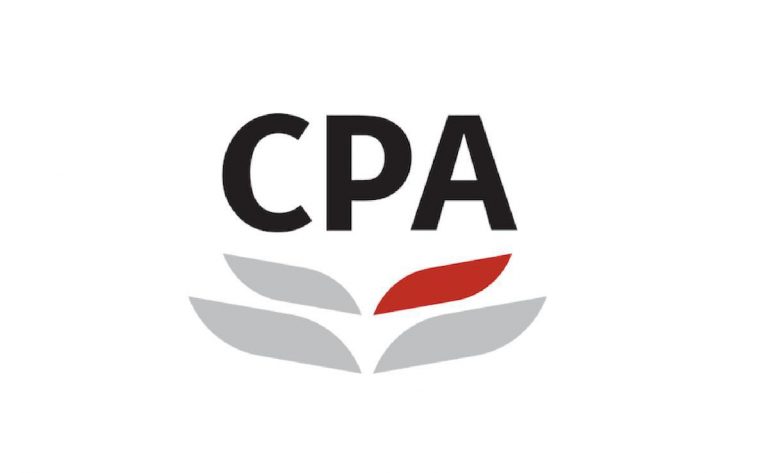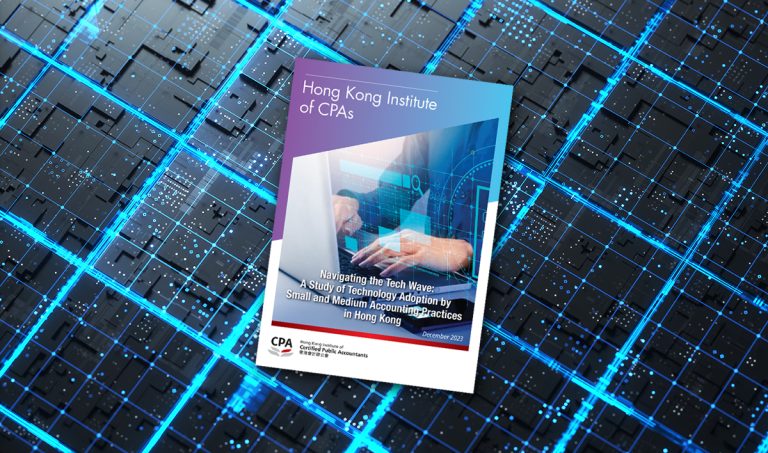Conducting an audit stock count for a coal-fired power station is no easy matter. It involves physically traversing the coal pile and using a two-metre GPS tracking pole to measure its area and elevation from the ground at more than 1,200 different points.
In the case of the coal reserve at German energy company RWE’s power station in Aberthaw in South Wales, the whole process takes around four hours.
But last month, PwC in the United Kingdom reduced this time to just 30 minutes, when, in a first for its global network, it used a remote-controlled drone to capture more than 300 images of the coal reserve.
These images were “stitched together” using software that recreated the stockpile in 3D, which is used to calculate the volume of the coal pile to over 99 percent accuracy.
.
“The drone trial was conducted to explore ways of challenging the traditional method of stock counting. It was a classic example of new technology challenging the old – and based on our results, the potential is groundbreaking,” Richard French, Audit Partner at PwC U.K., told the media last month.
Drones, or unmanned aerial vehicles, are everywhere – from capturing stunning bird’s-eye view video footage, to delivering packages, to causing airport chaos in London last December. They are now being seen in the world of audit, with the Big Four increasingly exploring the potential that drones have in improving the audit process.
EY is currently carrying out a pilot programme in the U.K. using drones for audit stock counts across a range of sectors, having successfully completed a proof of concept in the spring of last year. “Our initial findings show observation efficiency increases up to 300 times by utilizing drones for these repetitive tasks,” says Hermann Sidhu, Global Assurance Digital Leader at EY.
KPMG has also trialled using drones in stock counts for mining companies and in warehouses in Australia, while Deloitte has been trialling using drones in audits since 2016 as part of a wider move to reimagine the way it does audits in the light of new technologies, including artificial intelligence (AI), blockchain, big data and robotics.
“We have been using drones to audit and inspect land, agriculture, vehicles and facilities as a safer and more cost-effective alternative to manual inspections,” explains Jay Harrison, Deloitte China’s Audit and Assurance Transformation Leader.
Sky’s the limit
PwC identified a number of advantages in using a drone to do the stock count in its trial, not least of which was time.
The drone also enhanced accuracy by capturing around 900 data points per cubic metre, enabling the volume of the coal reserve to be calculated to within 2 centimetres.
Other benefits included safety, with the drone flight posing less of a health and safety risk compared with clambering over piles of coal, which may be unstable in places. It was also less disruptive as it did not require machinery to be moved.
As well as the stock count, PwC said drones could also be used to provide more efficient monitoring and management of sites, as well as giving insights into the health and maintenance of other assets, such as buildings.
Sidhu at EY points out that increasing the efficiency of an audit stock take, frees up auditors’ time to focus on other areas, such as building up a relationship with the business, risk identification, project management and the detailed scrutiny that mainly experienced auditors can do.
The fact that drones are able to capture higher volumes of data than traditional sampling techniques also enables accountants to offer greater insights to companies, particularly when the images are combined with analytics and AI. “If we can use drones to undertake inventory observations and repetitive tasks, frequently and consistently across all of a client’s warehouses and sites, with the potential to station hundreds of them around the world, then we can also provide enhanced perspectives,” says Sidhu.
He thinks in future drones may even be able to conduct an audit stock take without human assistance. “Drones will potentially have the ability to simply receive a meeting or calendar request to automatically go and conduct their work on a regular cadence.”
Daniel Lam, Managing Director of Hong Kong-based drone services company Prospero Aerial Solutions, thinks they could also be used to offer value-added services. He has come across examples where drones have not only been used to undertake livestock counts, but the images captured by them have then been run through intelligent software that picks up certain characteristics to identify which animals are sick, or to predict which ones may become unwell in the coming days, so that they can be separated from the rest of the herd. “Drones are simply the tool to extract the data, but the real power is interpreting the data to make it meaningful,” he says.
A multi-disciplinary team
PwC U.K. formed a specialist team around 18 months ago with the aim of helping clients take advantage of drone technology and the data it can provide. The team combined people with aviation, engineering, data management and machine learning experience with those from an auditing background. But it did not include drone operators, with the drone used in the audit of RWE owned and operated by U.K.-based drone manufacturer QuestUAV.
Elaine Whyte, Drones Leader at PwC U.K., does not expect this to change, explaining that a very different skill set is needed to operate a drone in the air, compared with interpreting the data it captures. She adds that it is relatively inexpensive to hire someone to fly a drone. “For us, the capturing of the data isn’t the most important part of what needs to happen. It is what we then do with that data that is important and how we integrate it back into the clients’ business,” she says.
But Lam says, while it depends on the frequency and nature of the use of drones, he does expect audit firms to build up their own drone teams in the future. “It makes sense to have a dedicated in-house drone team. Most construction companies have their own in-house teams now,” he says. “There is plenty of proprietary software out there which comprise machine learning algorithms to speed up the data processing and capture, which is super exciting to see.”
Overcoming challenges
Sidhu says one of the major challenges EY has encountered is the average flight time of the drones currently being used in the industry. “A standard enterprise-grade drone will achieve up to 40 minutes maximum flight time. Obviously for smaller sites this is not a problem, but for the vast areas we also work in, such as automotive counts, having a drone that needs to have a battery swapped frequently removes the benefits of autonomous flight.”
This issue has led EY to explore pioneering work with hydrogen fuel-cells that can potentially increase the flight-time up to four hours.
Harrison at Deloitte thinks cost could also be a barrier, pointing out that the price of drones and accessories means it would not be easy to quickly deploy them on a large scale, especially as stock-taking activities are seasonal in the audit process. He also expects regulations like no-fly zones or the need for pre-approved access to discourage the use of drone in some scenarios.
Drones are well suited to stock counts in certain sectors, such as mining and agriculture, where the client has large, external assets that need to be measured volumetrically. But Harrison points out that the limitation of current drone technology means they may not work well for indoor warehouses or stock that is stored in a way that is not easily visible.
“For us, the capturing of the data isn’t the most important part of what needs to happen. It is what we then do with that data that is important and how we integrate it back into the clients’ business.”
KPMG has found a way around this problem, by using drones to scan barcodes on concealed stock. Scott Guse, Senior Audit Partner at KPMG Australia explains: “Sometimes in warehouses you have lots of pallets stacked behind other pallets, and you have to get forklifts in to move things out of the way to physically verify the existence of those pallets of materials. We have used drones to fly across the top of all of these pallets and scan barcodes to validate that that stock actually exists and is accurately recorded in the client’s general ledger.”
Lam thinks education and awareness of the benefits of drones is also a factor holding back their use. “You’ll find that in less developed parts of the world, drones are really taking off, but in more developed places, less so. Regulatory issues and the stigma surrounding privacy is a concern for some organizations,” he says.
He adds that legal issues can also be a challenge, particularly in places like Hong Kong. “At the moment, operators in Hong Kong are bound by something called ‘Visual Line of Sight,’ meaning the operator must keep a visual unassisted line of sight of the drone at all times,” he explains. “For surveying highway routes and such like, then ‘Beyond Visual Line of Sight’ is necessary and not all jurisdictions are allowing that yet.”
Joanne Murray, Senior Manager at PwC U.K. and Drones Assurance Lead, points out that while using a drone is more efficient than doing a manual stock count on the day, it requires important preparation work. “There is quite a lot of planning to do in terms of the risk assessment, the flight plans and engaging with the drone operators. This planning time needs to be factored into all engagements,” she explains.
She adds that auditors also need to consider whether the drone company can do the work that a traditional approach would cover, such as accessing concealed stock that the drone cannot photograph. “We need to look at the balance of what the drone can do, versus what the human can do.”
Future adoption
Despite the success of its trial, PwC will still use information gathered using the traditional manual stock count method for RWE’s formal year-end financial statements. “We are currently working with our internal quality teams and establishing the methodology on how we can formalize this,” says Murray.
Although PwC has since carried out another audit stock count using a drone for a different client, Murray thinks they are still some way off large-scale adoption.
She explains that if a drone is going to be used by PwC, it must meet at least one of four key metrics – quality and whether it will provide improved results; increased efficiency, meaning using a drone must be quicker or cheaper; whether there are health and safety benefits for the audit team and the client; and whether it is less disruptive on the day of the stock count. “If we don’t hit at least one of those we realize that the traditional method is probably the best approach,” she says.
KPMG’s Guse does not expect using drones in audit to become the norm. He says: “It is still very early in the process, but I don’t see it becoming really widespread at this stage. We will continue to use drones to validate information that is hard for employees to get to but there is a limit to some of their uses and there are other technologies that are more valuable than drones in certain places.”
For example, he says it can be more cost-effective to use satellite images from government bodies or private organizations, which give larger areas of coverage, for verification processes in certain circumstances, such as counting cattle in a paddock or checking the acreage over which crops are being grown by agribusinesses. “There are going to be more and more uses for drones, but these will need to be assessed against what other technologies exist and could make our processes more efficient.”
“As a company we recognize that our clients are going to be disrupted by this technology, so it is really important that we also disrupt ourselves and understand how it works.”
Sidhu says EY is currently working with a range of clients in sectors including retail, manufacturing, construction and agriculture, to gain an understanding of the size of the opportunity, before deciding how to scale its capability in this area. “What we are seeing is a real enthusiasm from many businesses,” he says.
Even so, PwC estimates that by 2030, the drone ecosystem in the U.K. alone will be worth £42 billion and employ 630,000 people. “While today we are still having some of these elementary questions over how it compares to traditional methods from an auditing perspective, from a much broader society side, this will become business as usual for many different industries moving forward,” says Whyte.
PwC already has a number of specialist teams across its network, including in the United States, Australia and Poland, exploring the use of drones in a number of different use cases, including audit. “As a company we recognize that our clients are going to be disrupted by this technology, so it is really important that we also disrupt ourselves and understand how it works,” says Whyte. Guse agrees: “Technology is changing the way we do our business every day. It is a great time to be an auditor because these technologies enable us to enhance the work that we do and provide even better audit quality.”
PwC completed its first stock count audit using drone technology, the firm announced last month. Initial findings from the project concluded that the traditional method of manually traversing the coal pile can take around four hours, whereas using a drone it can be done in half an hour – a reduction of 85 percent.


















